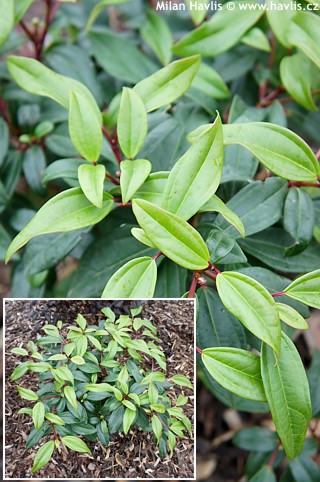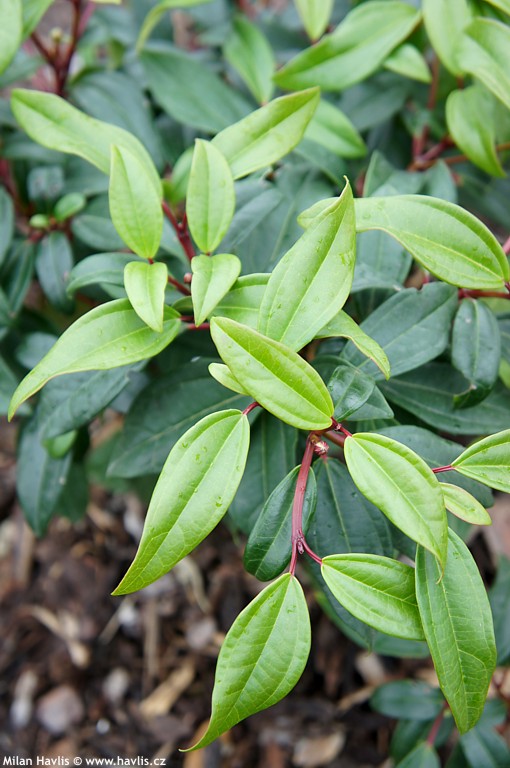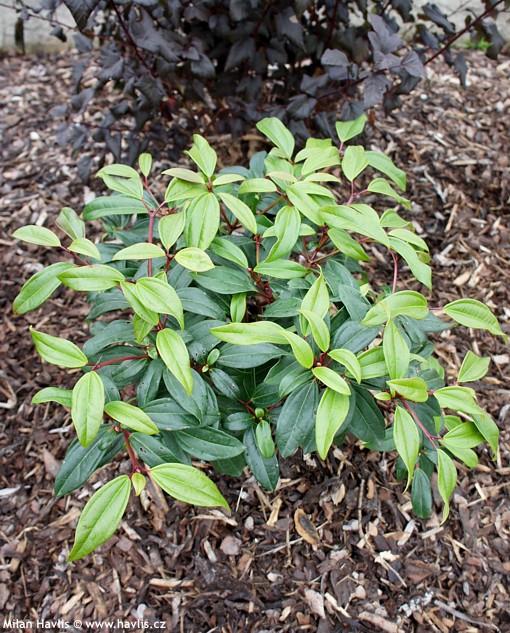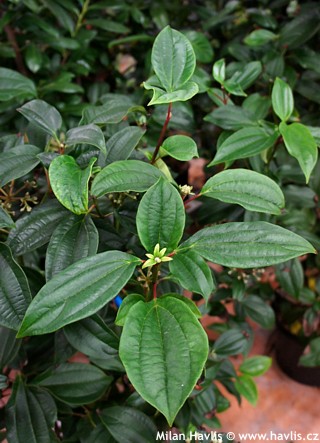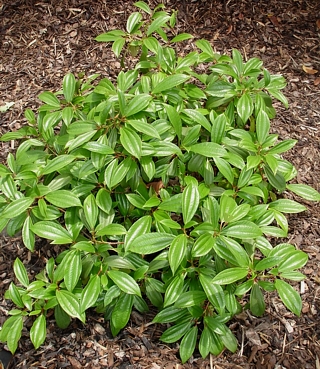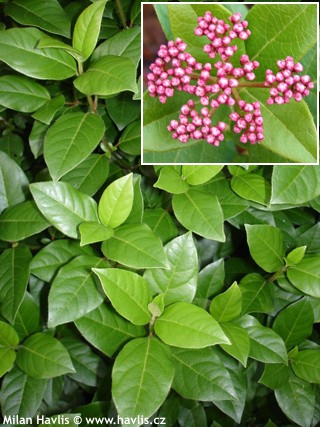Viburnum davidii 'ANGUSTIFOLIA' David viburnum
Angustifolia is a botanical term used for plants that have narrow leaves. In case of this variety of David viburnum the leaves are about 50% narrower but darker green compared to the species. They are evergreen, partly glossy, elliptic, and have 3 prominent, deep veins, which give this shrub an additional 3D image. The stalks, young twigs, and flower buds are rich carmine red or fresh burgundy red, especially in autumn and winter. Insignificant, small, white flowers open in early spring in C.E. conditions or in autumn in milder climates, but are not the key feature. When pollinated they produce deep sky blue fruits ripening in the autumn.
Angustifolia David viburnum has smaller leaves but surprisingly gets a little taller and its overall size lies between the David viburnum species and cinnamon-leaved viburnum. Use it as a small specimen plant in a small front yard, or in combination with other evergreen plants in a border, or as an evergreen companion of standard trees.
David viburnum requires fertile, evenly moist but well-drained, preferably acid soil in part shade. This variety proved hardier than the species and survives short spells of about -25°C without significant damage if placed in part shade.
Last update 15-10-2012
Goods are shipped all over Europe. For Russia and U.K. and for further details please read about SHIPPING OPTIONS HERE.
Are you interested in a serious discount for orders NOV-FEB? Check your options here.
THE PRICES INCLUDE VAT of 15%. For quick conversion you can use 1 CZK = approx. 0.04 EUR
- STANDARD QUALITY - Plants of this group are 1st class quality with number of branches and overall density adequate to their size and age, considering they were container grown.
- DE LUXE QUALITY - This label guarantees a luxurious quality of manually selected plants that, compared to their height and age, are exceptionally dense and beautiful.
- EXTRA - These plants are usually mature and bigger specimens with exceptional overall appearance.
- STANDARD (as described in the plant form) means a tree with a trunk of 190-210 cm and a crown at the top, unless specified differently. The commercial size for trees is their girth measured in the height of 1m from ground.
- HOBBY - These plants are of the same quality as our standard-quality plants but younger and therefore cheaper.
- SHRUB - a woody plant with branches growing bushy from the ground level.
- HALF-STANDARD or MINI-STANDARD - a small tree with shorter trunk, its size is usually specified.
- FEATHERED - These are trees with branches growing already from the base of the trunk and up along the stem.
- GRASSES and PERENNIALS - Sizes given usually read the diameter of the pot or the clump, as specified.

































